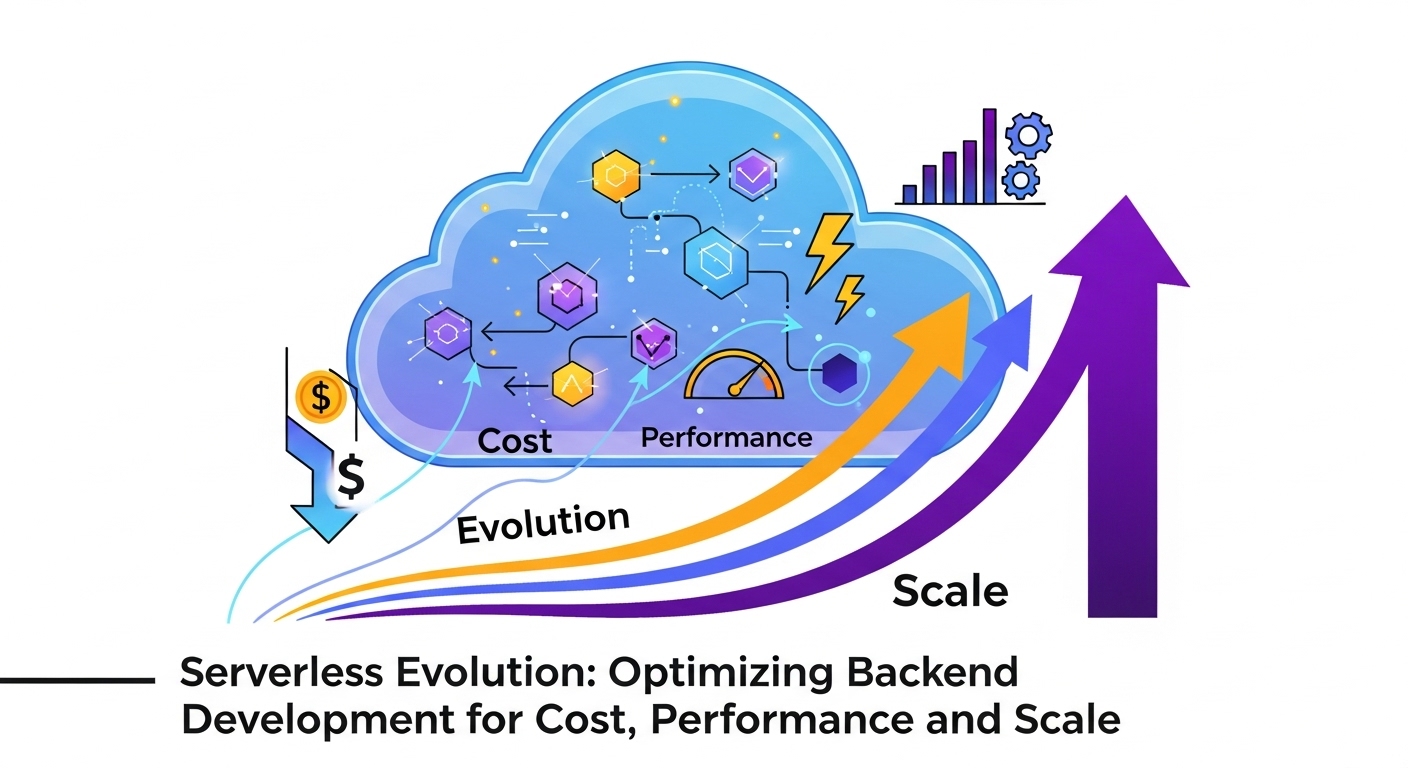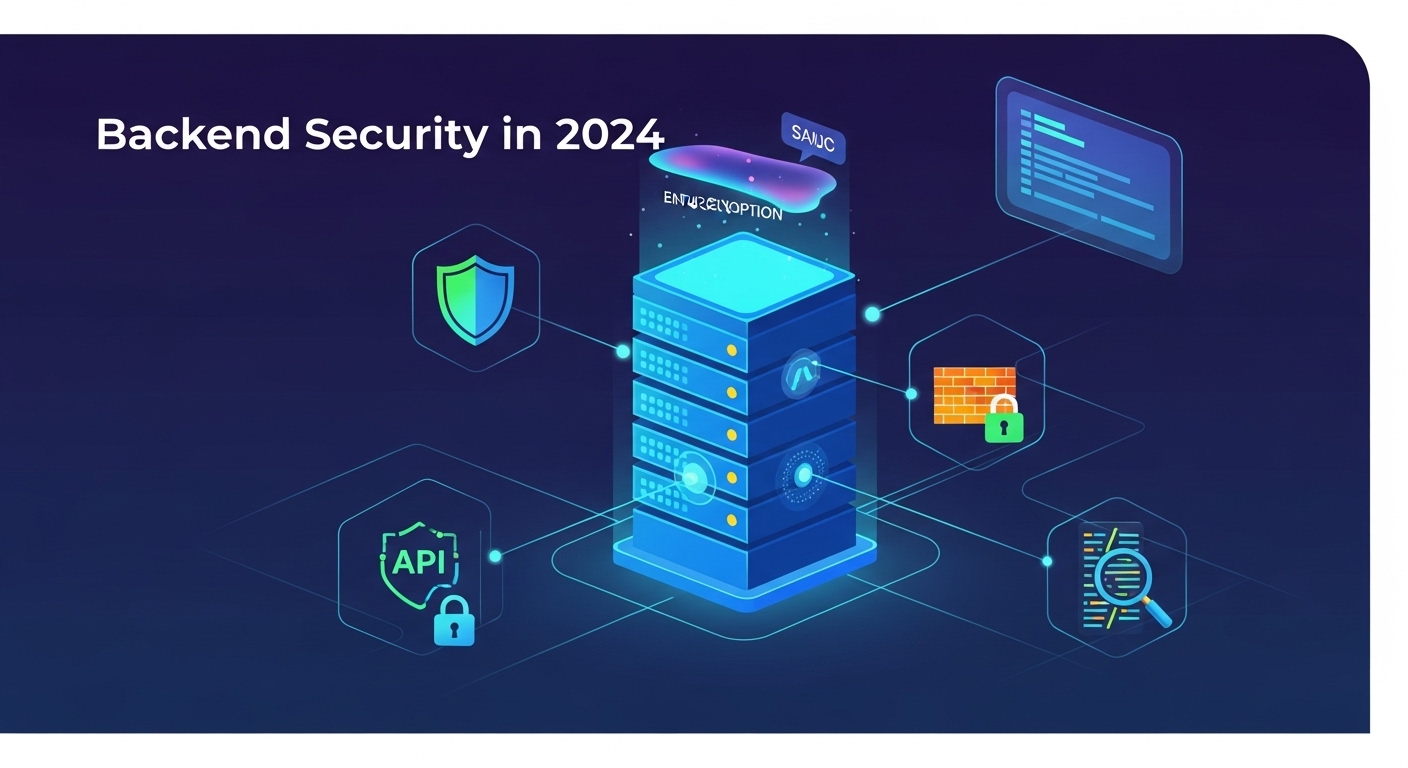The Shifting Landscape of Backend Development
For decades, the world of backend development was synonymous with servers. We managed them, patched them, scaled them, and worried about them. Whether it was a physical machine humming in a closet or a virtual instance in the cloud, the server was the central unit of our infrastructure. But what if we could build powerful, scalable applications without ever thinking about a server again? This isn’t science fiction; it’s the reality of the serverless evolution, a paradigm that is fundamentally reshaping how we approach backend development.
Serverless computing is more than just a buzzword; it’s a strategic shift that allows developers to focus purely on code and business logic, abstracting away the complexities of infrastructure management. By offloading the responsibility of provisioning, scaling, and maintaining servers to cloud providers, teams can innovate faster, reduce operational overhead, and build more resilient systems. This article delves into this evolution, exploring how serverless architecture is the key to optimizing backend development for the three pillars of modern applications: cost, performance, and scale.
What is Serverless Architecture? A Quick Refresher
Before we dive deep, let’s clarify a common misconception. The term ‘serverless’ doesn’t mean servers have vanished. They are very much still there, but you, the developer, no longer have to manage them. Instead, a cloud provider (like AWS, Google Cloud, or Azure) dynamically allocates computing resources to execute your code on your behalf.
The Core Idea: Functions as a Service (FaaS)
At the heart of serverless is the concept of Functions as a Service, or FaaS. In this model, you write your backend logic as a set of independent, stateless functions. Each function is designed to perform a single, specific task—like processing a payment, resizing an image, or querying a database. These functions are event-driven, meaning they only run in response to a specific trigger. This trigger could be an HTTP request from a user, a new file uploaded to cloud storage, a message in a queue, or a change in a database.
When a trigger occurs, the cloud provider instantly spins up a container, runs your function’s code, and then shuts it down. You only pay for the precise amount of compute time your function uses, down to the millisecond. This is a radical departure from traditional models where you pay for servers to be running 24/7, regardless of whether they are processing requests.
Optimizing for Cost: The Pay-as-You-Go Revolution
One of the most compelling arguments for adopting serverless is its economic model. It fundamentally changes the cost structure of running a backend, moving from a capital-intensive model (CapEx) to a purely operational one (OpEx) that scales directly with usage.
Eliminating Idle Costs
Consider a traditional backend hosted on an EC2 instance or a virtual machine. You provision a server with a certain amount of CPU and RAM, and you pay for it every hour it’s running. If your application has low traffic at 3 AM, you’re still paying for that server to sit idle, waiting for requests. With serverless, this entire concept of idle cost disappears. If no one is using your application, your functions aren’t running, and your bill is zero. This is a game-changer for startups, side projects, and applications with unpredictable or spiky traffic patterns.
Reduced Operational Overhead
The total cost of ownership (TCO) for an application isn’t just about server hosting fees. It includes the human cost of managing that infrastructure. System administrators and DevOps engineers spend countless hours on tasks like OS patching, security hardening, capacity planning, and configuring auto-scaling groups. In a serverless world, the cloud provider handles all of this. Your team is freed from the undifferentiated heavy lifting of infrastructure management and can focus on what truly matters: building features that deliver value to your customers. This shift in focus translates directly to increased productivity and lower operational costs.
Boosting Performance: Speed and Responsiveness at its Core
While cost savings are a major draw, serverless also offers significant performance advantages. Its architecture is inherently designed for concurrency and low-latency responses, which are critical for modern user experiences.
Massive Parallelism on Demand
Imagine a flash sale on an e-commerce site. Suddenly, thousands of users are trying to check out simultaneously. In a traditional setup, this would overwhelm your servers unless you had massively over-provisioned your capacity beforehand. With serverless, each incoming request can trigger a separate invocation of your function. The cloud provider can spin up thousands of concurrent instances of your function in parallel to handle the load. This inherent ability to parallelize execution means your application can absorb massive traffic spikes without a drop in performance.
Getting Closer to the User with Edge Computing
Latency is the enemy of a good user experience. A key factor in latency is the physical distance between the user and the server processing their request. Serverless platforms are increasingly integrating with edge computing networks. Services like AWS Lambda@Edge or Cloudflare Workers allow you to run your backend functions at Points of Presence (PoPs) around the globe, physically closer to your users. When a user makes a request, it’s routed to the nearest edge location, where the function executes. This dramatically reduces network latency, resulting in a snappier, more responsive application.
Achieving Unprecedented Scale: The Elasticity Dream
Scalability has always been a core challenge in backend development. Serverless doesn’t just simplify scaling; it redefines it. It offers a level of elasticity that is nearly impossible to achieve with traditional server-based architectures.
Automatic Scaling Without Configuration
Forget configuring load balancers, defining auto-scaling policies, or setting up container orchestration with Kubernetes. Serverless scaling is automatic, seamless, and managed entirely by the provider. Whether you have ten users or ten million, the platform handles it. As requests come in, the provider scales up the number of function instances to meet the demand. As traffic subsides, it scales back down to zero. This hands-off approach to scaling ensures your application is always available and performant, regardless of the load, without any manual intervention.
Ideal for Event-Driven Architectures
Modern applications are increasingly built around event-driven architectures, where different services communicate asynchronously by producing and consuming events. Serverless is a natural fit for this model. For example, when a user uploads a profile picture, an event can trigger a series of serverless functions: one to validate the image, another to create thumbnails of different sizes, and a third to update the user’s profile in the database. Each function is a small, independent unit that scales independently, creating a highly resilient and scalable system.
Challenges and Considerations in the Serverless World
Of course, no technology is a silver bullet. While the benefits are immense, it’s important to be aware of the challenges and trade-offs associated with serverless development.
- Cold Starts: When a function hasn’t been used for a while, the provider shuts down its container to save resources. The first request to that function after a period of inactivity may experience a slight delay, known as a ‘cold start,’ as the provider needs to initialize a new container. While providers are constantly improving this, it can be a concern for latency-sensitive applications.
- Vendor Lock-in: Building an application heavily reliant on a specific provider’s serverless ecosystem (e.g., AWS Lambda, S3, DynamoDB, API Gateway) can make it difficult to migrate to another cloud provider in the future.
- Monitoring and Debugging: Debugging a distributed system composed of dozens or hundreds of ephemeral functions can be more complex than debugging a monolithic application. It requires a new set of tools and a different mindset, focusing on distributed tracing and structured logging.
Conclusion: Embrace the Serverless Future
The evolution from monolithic servers to serverless functions represents a profound shift in backend development. It’s a move towards higher-level abstractions that empower developers to build faster, more resilient, and more cost-effective applications. By optimizing for cost through a pay-per-use model, enhancing performance with massive parallelism and edge execution, and delivering near-infinite scale on demand, serverless architecture is no longer a niche technology for specific use cases. It has become a mainstream, powerful, and strategic choice for building the next generation of applications. If you’re looking to build a backend that is efficient, scalable, and future-proof, the serverless evolution is not just an option to consider—it’s the direction the industry is heading. What are you waiting for? It’s time to start building.


